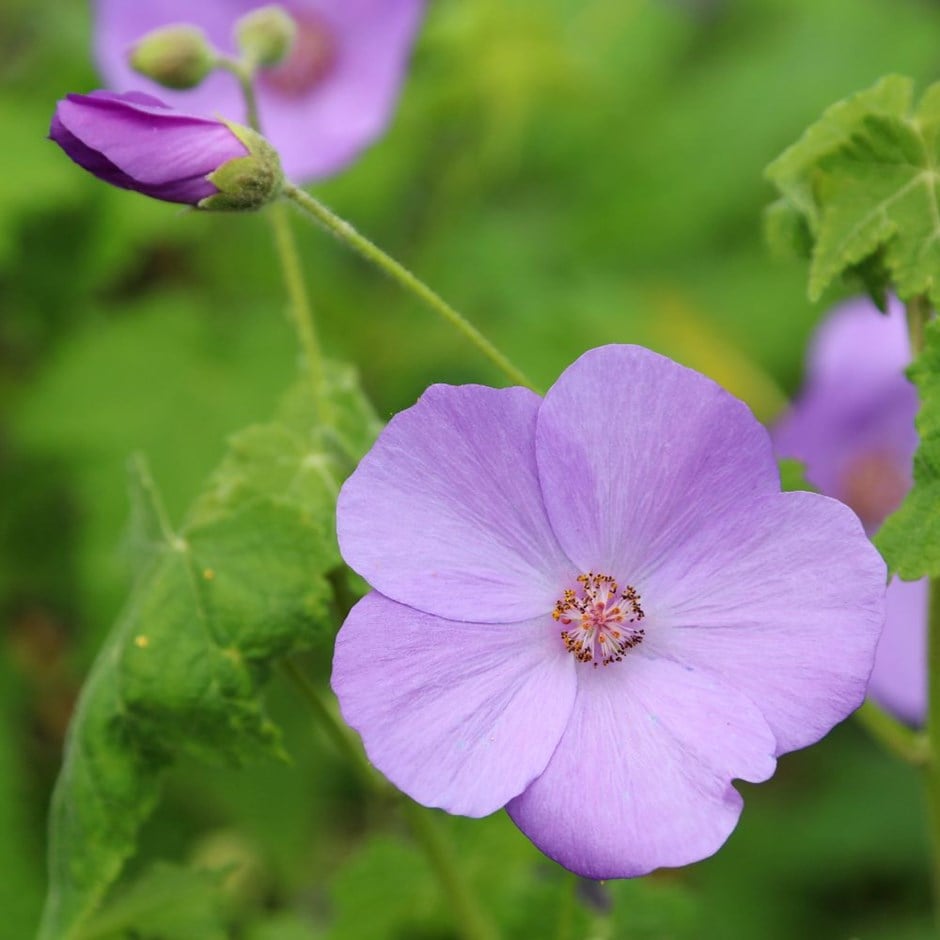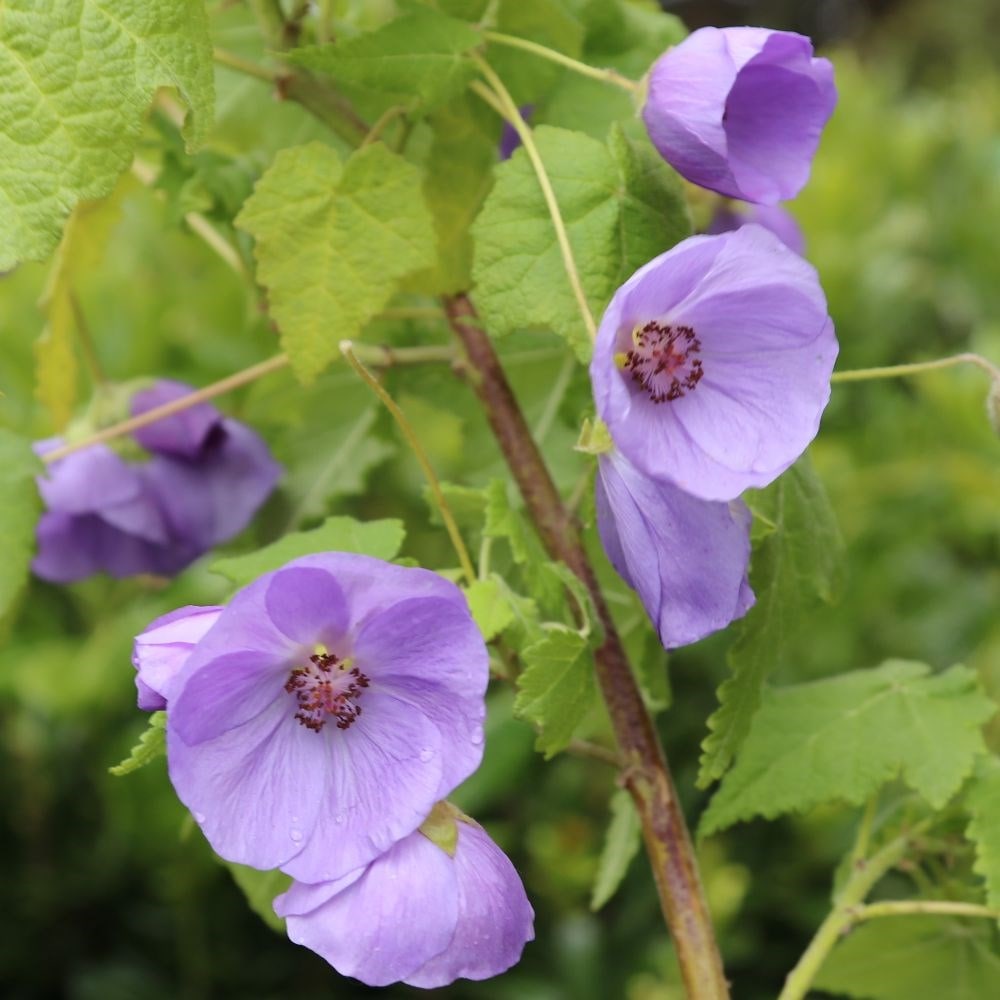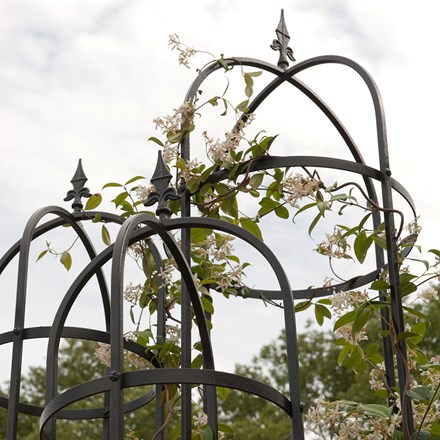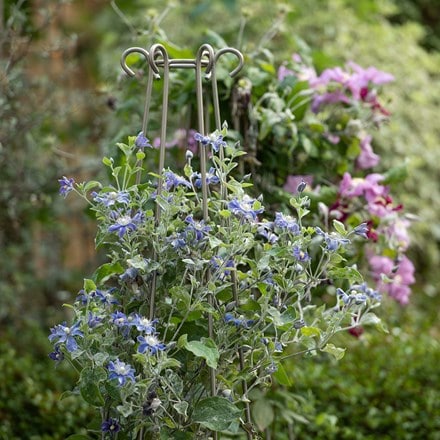Corynabutilon × suntense
Indian mallow syn. Abutilon × suntense
- 3 litre pot
- £49.99
- In stock (shipped within 2-3 working days)
Delivery options
- Standard £5.99
- Position: full sun
- Soil: moderately fertile, freely draining
- Rate of growth: average
- Flowering period: June to October
- Hardiness: half hardy (will need protection in winter)
Abutilon x suntense is a vigorous, soft-wood shrub with downy, vine-like leaves originating from Chile. Large petalled, saucer-shaped mauve flowers with prominent bosses of orange stamens appear from mid to late summer. It's ideal growing against a south-facing wall or fence and can also be grown in a large pot and overwintered in a conservatory or frost-free greenhouse.
To avoid dry conditions, and to ensure good soil contact around the rootball, we advise planting climbers at least 30cm (12in), and preferably 45-60cm (18-24in) away from the base of a wall or fence. An even larger distance should be maintained when planting climbers beside an existing tree or shrub.
Plant in a sunny, sheltered position with protection from cold winds, ideally against a south- or west-facing wall. Well-drained but fertile soil is best, and in colder regions it may be safer grown in a large container so it can be moved under cover in winter. Water freely in summer to support vigorous growth and abundant flowers, but reduce watering in autumn and winter to prevent root rot.
Feed with a balanced liquid fertiliser every 2-3 weeks during the growing season. Mulch in spring with well-rotted organic matter to retain soil moisture and give added protection to the roots. In colder climates, apply fleece or bring container plants into a frost-free greenhouse over winter, as the plant is not reliably hardy below -5°C (23°F).
Prune by lightly trimming back shoots that spoil the symmetry in mid- to late spring. Avoid hard pruning, but remove any dead or damaged stems after winter. Pinching out soft tips in summer will encourage bushier growth and more flowers.
Plant in a sunny, sheltered position with protection from cold winds, ideally against a south- or west-facing wall. Well-drained but fertile soil is best, and in colder regions it may be safer grown in a large container so it can be moved under cover in winter. Water freely in summer to support vigorous growth and abundant flowers, but reduce watering in autumn and winter to prevent root rot.
Feed with a balanced liquid fertiliser every 2-3 weeks during the growing season. Mulch in spring with well-rotted organic matter to retain soil moisture and give added protection to the roots. In colder climates, apply fleece or bring container plants into a frost-free greenhouse over winter, as the plant is not reliably hardy below -5°C (23°F).
Prune by lightly trimming back shoots that spoil the symmetry in mid- to late spring. Avoid hard pruning, but remove any dead or damaged stems after winter. Pinching out soft tips in summer will encourage bushier growth and more flowers.
Goes well with
Empathy RHS after plant climbers & flowering plant food with rootgrow
1kg
£7.99
In stock (shipped within 2-3 working days)
Elegant tiered metal wall leaning obelisk - 2 tier pewter
1.39m
£69.99
In stock (shipped within 3-5 working days)




